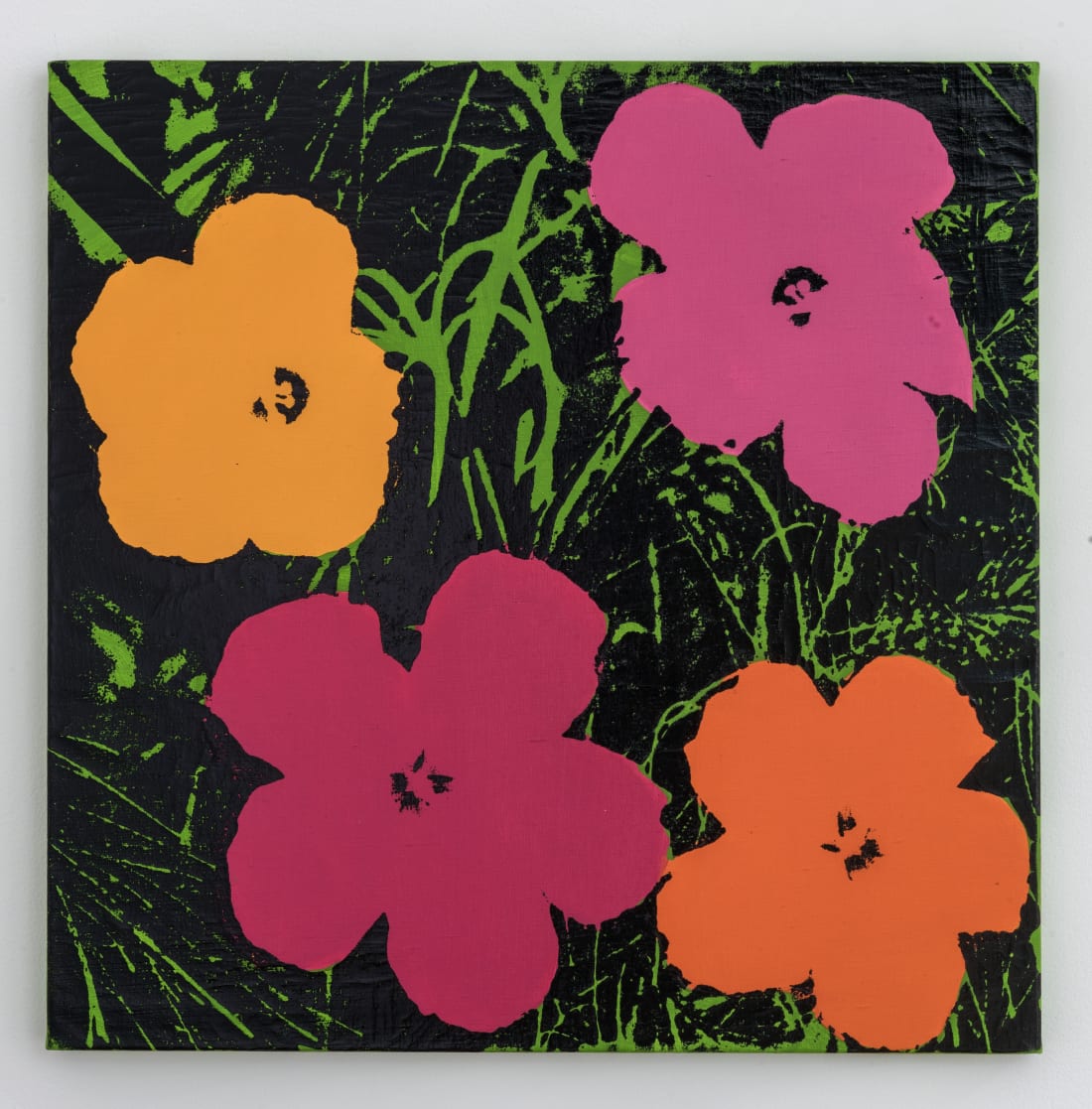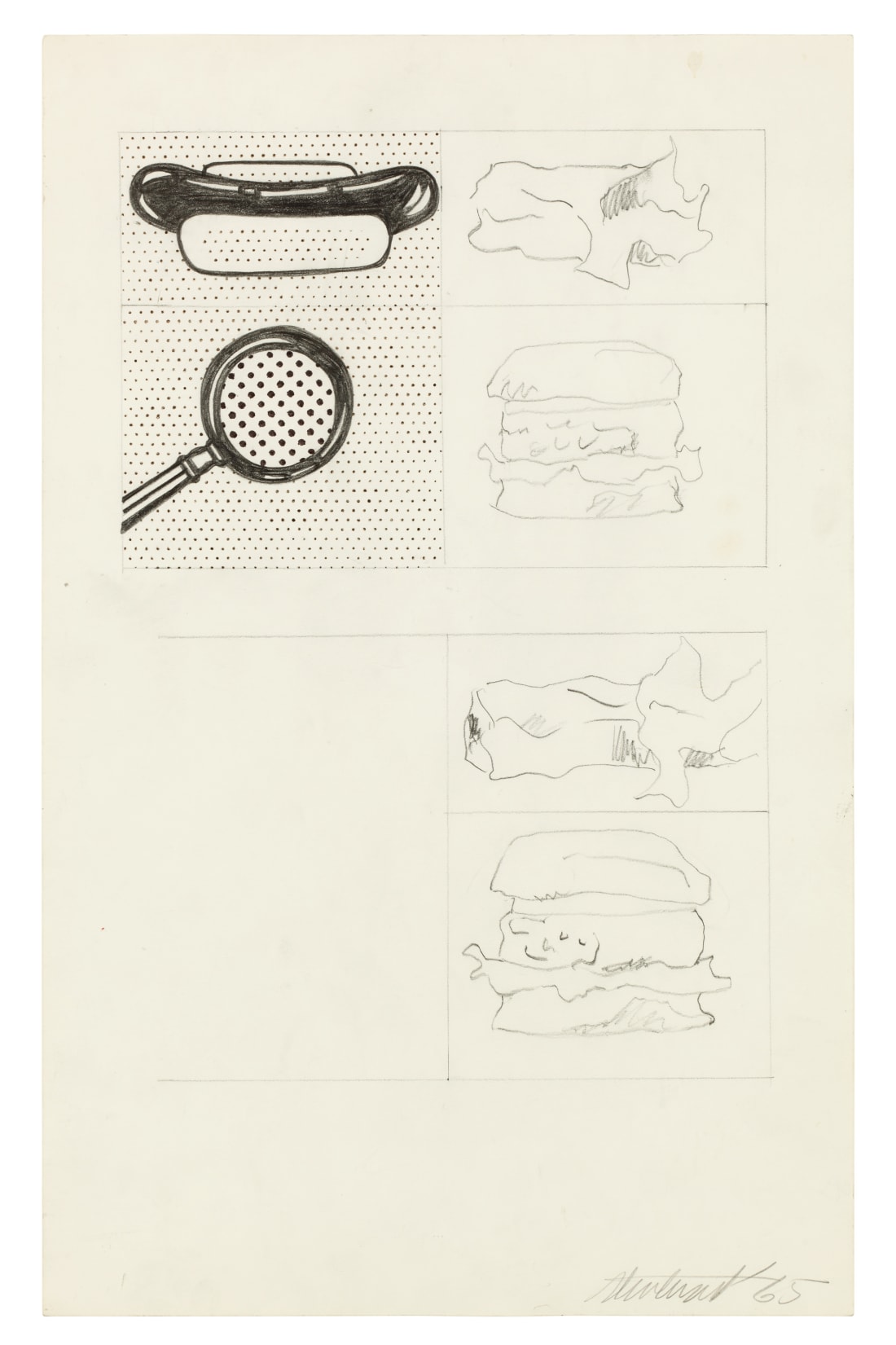

Sturtevant Estate
Overview
'If you use a source-work as a catalyst, you throw out representation. And once you do that, you can start talking about the understructure [of art].'
The American artist Sturtevant is best known for her repetitions of the works of other artists, which she recreated manually from memory after having seen a piece that intrigued her. These can immediately be identified with the original, but they are not copies. The artists with whose work she engaged include her contemporaries in American Pop – Jasper Johns, Roy Lichtenstein, Claes Oldenburg, James Rosenquist, Andy Warhol and Tom Wesselmann – as well as Marcel Duchamp, Joseph Beuys, Frank Stella, Felix Gonzalez-Torres, Keith Haring and Anselm Kiefer, among others. Her aim was not to achieve an exact replica, but rather to address notions of authorship, authenticity and originality that would later come to the fore in our own digital age, characterised by the endless circulation and recombination of images.
Sturtevant's first exhibition, held in 1965 at the Bianchini Gallery, New York, featured her versions of Andy Warhol's silkscreened flowers, a Jasper Johns flag, a Frank Stella concentric square, a Claes Oldenburg garment and other paintings suspended on a clothes rack. The relationship between repetition and difference, as articulated in Gilles Deleuze's seminal philosophical text, was central to her practice. Before it became available in English translation, Sturtevant read Différence et répétition (1968) in the original French with the aid of a dictionary. The disparities between versions encourage the viewer to look beyond their surface similarities and 'trigger thinking' about the underlying conceptual structure of art. She achieved these crucial differences by working 'predominantly from memory, using the same techniques, making the same errors and thus coming out in the same place'. When Warhol was asked how he made his work he famously replied: 'I don't know. Ask Elaine [Sturtevant]'.
The American artist Sturtevant is best known for her repetitions of the works of other artists, which she recreated manually from memory after having seen a piece that intrigued her. These can immediately be identified with the original, but they are not copies. The artists with whose work she engaged include her contemporaries in American Pop – Jasper Johns, Roy Lichtenstein, Claes Oldenburg, James Rosenquist, Andy Warhol and Tom Wesselmann – as well as Marcel Duchamp, Joseph Beuys, Frank Stella, Felix Gonzalez-Torres, Keith Haring and Anselm Kiefer, among others. Her aim was not to achieve an exact replica, but rather to address notions of authorship, authenticity and originality that would later come to the fore in our own digital age, characterised by the endless circulation and recombination of images.
Sturtevant's first exhibition, held in 1965 at the Bianchini Gallery, New York, featured her versions of Andy Warhol's silkscreened flowers, a Jasper Johns flag, a Frank Stella concentric square, a Claes Oldenburg garment and other paintings suspended on a clothes rack. The relationship between repetition and difference, as articulated in Gilles Deleuze's seminal philosophical text, was central to her practice. Before it became available in English translation, Sturtevant read Différence et répétition (1968) in the original French with the aid of a dictionary. The disparities between versions encourage the viewer to look beyond their surface similarities and 'trigger thinking' about the underlying conceptual structure of art. She achieved these crucial differences by working 'predominantly from memory, using the same techniques, making the same errors and thus coming out in the same place'. When Warhol was asked how he made his work he famously replied: 'I don't know. Ask Elaine [Sturtevant]'.
Sturtevant worked across media, ranging from painting and sculpture to photography, wallpaper and, from 2000 onwards, video works that combined advertising and internet images with her own film material. These later video works turn a critical gaze on today's image-saturated media culture, creating repetition of a different kind on a continuous loop. As the artist stated in 2012, 'What is currently compelling is our pervasive cybernetic mode, which plunks copyright into mythology, makes origins a romantic notion, and pushes creativity outside the self. Remake, reuse, reassemble, recombine – that's the way to go.'
Born Elaine Frances Horan in Lakewood, Ohio in 1924, she was known professionally by her married surname even after the couple separated. Sturtevant received her BA from the University of Iowa, followed by an MA in psychology from Columbia University. In 1990, she relocated from the US to Paris, where she lived and worked until her death in 2014. She was awarded the Golden Lion for lifetime achievement at the 54th Venice Biennale in 2011, and her pioneering work has been featured in numerous exhibitions, including at The Museum of Modern Art, New York (2014); Serpentine Galleries, London (2013); Kunsthalle, Zürich (2012); Moderna Museet, Stockholm (2012); Musée d'Art Moderne de Paris (2010) and the Museum für Moderne Kunst, Frankfurt (2004).
Videos

















































































































































































































































